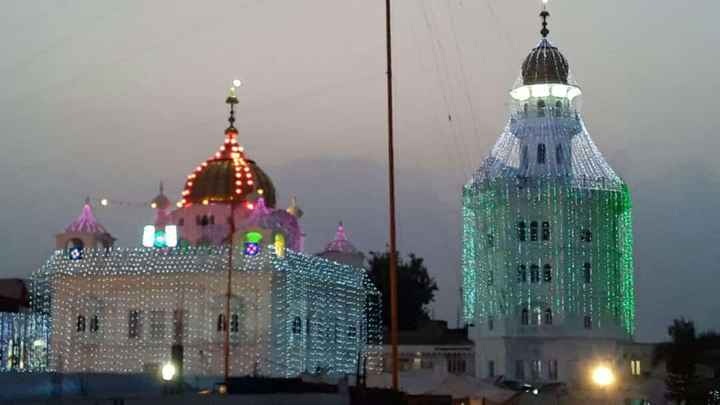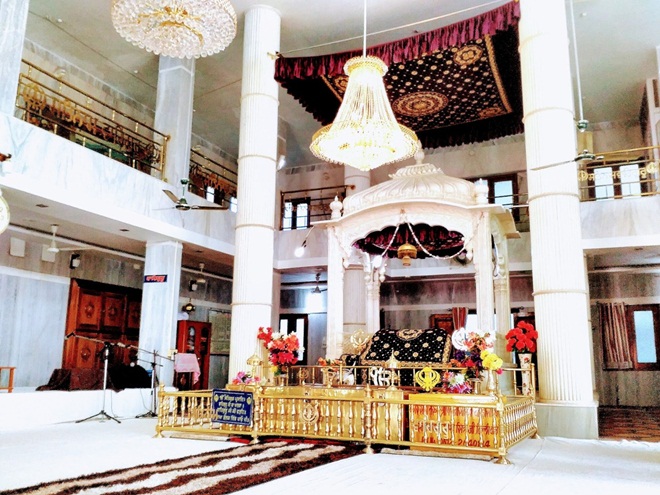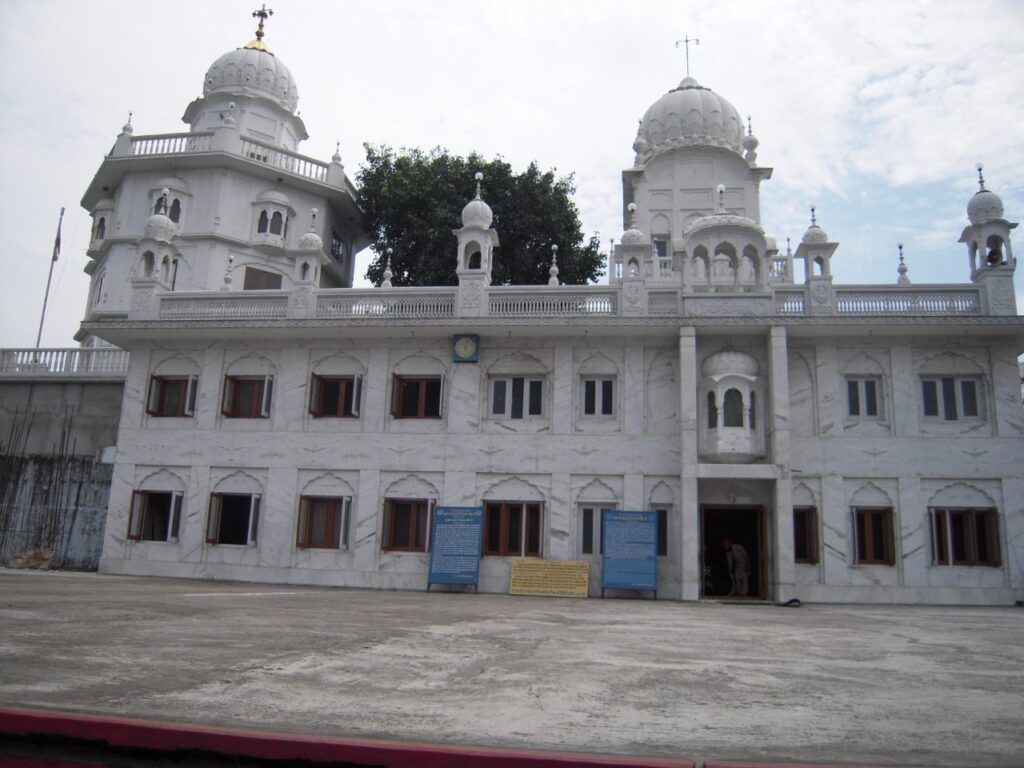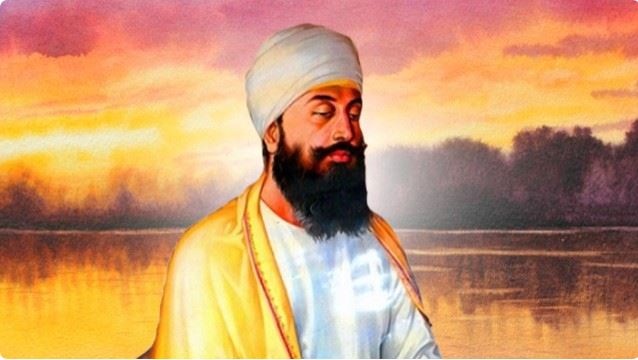Prof Avinash Singh
In most cases, knowledge about Guru Teg Bahadur, the ninth Sikh master, does not go beyond his supreme sacrifice alongside three of his followers – Bhai Mati Das, Sati Das and Dyala Das – for refusing to convert to Islam in 1675. His oblation followed the request by a delegation of Kashmiri Pandits led by Pt. Kirpa Ram. The motive was to stall the atrocities on the then minorities by Moghul ruler Aurangzeb.
Very little information is available on other unusual facets of life and times of Guru Teg Bahadur.
Today on the occasion of his 400th birth anniversary let’s talk about: His being a fearless warrior, a poet, a spiritual scholar and his manoeuvres in peace, conflict management and social justice. He was a true apostle of calmness and patience. His 116 hymn listed in Guru Granth Sahib – – 56 shloks and 59 shabads — reflect his nearness to God, tranquilty and long years of meditation.
Born in 1621, the youngest son of Guru Hargobind Sahib, the sixth Sikh master, was given the name of Tyag Mal. At the age of 13 he showed his mettle with his sword in the battle of Kartarpur with regional Moghul chieftain Painde Khan. Consequently, he was renamed as Tegh Bahadur. He was well-trained in horsemanship and archery; he was also given education on Vedas, Upnishads and Puranas.
Parampita Guru Hargobind Sahib, the ideator of the Miri Piri concept, had a definite role for Tegh Babadur Sahib in mind when he picked up Guru Har Rai to succeed him.
Toward the end of his life Guru Hargobind moved to Bakala, then a sprawling town on the banks of Beas. It was here Teg Bahadur, married to Mata Gujri in 1633, took to solitude and meditation, for over 20 years.

When Guru Har Krishan, the eighth master, contracted small pox while serving the suffering humanity of Dilli (Delhi), on the banks of Yamuna River, where Gurdwara Bala Sahib is situated, he told Sikhs about the next Guru being at ‘Baba Bakale’.
Consequently many sadhus and religious men established themselves at the venue, each pretending to be the chosen one to be anointed as the next master. Sailor and businessman Makhan Shah Lubana later helped identify the real one among the multitude giving his famous call ‘Guru Ladho Re’.
Having stayed in solitude for years Guru Teg Bahadur gave another example of his patience at Amritsar. Prevented from entering Harmandir Sahib, the Guru sat in a solitary cell just outside the precincts of Sri Darbar Sahib. The place is now known as Thara Sahib. This was in 1665.
The following year he was on a dual mission. To visit the places in North East India for spread of Sikhism and renew ties with families of those who had come in contact with Guru Nanak during his travels to the area. He travelled to Kamrup (now Assam) and Dakha – now in Bangladesh and has been the most traveled among Sikh Gurus after Nanak sahib.
Guru Sahib left Mata Gujri expecting Gobind Rai, in Patna to carry on with his sojourn to North East in 1666. It was in the 42nd year of her marriage that Mata Gujri was in family way. The Guru met his son for the first time when Gobind Rai was four in 1670.
In 1669 Raja Ram Singh, the ruler of Amber (Amer) was assigned by Moghul ruler Aurangzeb to quell the rebellion by Ahom King Chakradwaj Singha in Assam. It was a punishment task because Maratha warrior Shivaji and his son had escaped from the custody of Raja Ram Singh. Ahom warriors had a separate regiment known for performing supernatural through tantra and mantras and the visiting king had hired the services of many faith healers and failed in containing the Ahom army, backed by powerful magicians and performers of supernatural.
Guru Tegh Bahadur agreeing to help Ram Singh on arrival at Dhubri on the banks of mighty Brahmaputra was attacked by massive missiles — a 26 yard stone and a massive tree, both hurled with mechanical devices from across the river. This was before one arrow fired by the master ended all the mystery magical powers of the Assamese army. The same hour they were at the feet of the Guru.
In next few days the Saint Soldier was able to broker a lasting peace between two forces and brought them together at what is known today known as Thara Sahib.
Soldiers of two armies together agreed to raise a mound of earth by putting five shields each of red sand before burying their arms there. Such was the pursuing power of the Guru.
It was a precursor to Maharaja Ranjit Singh sending forces to help Ahom rulers in 1820 in their war against the Burmese forces.
The families of these Sikh soldiers who survived the fierce battle stayed back in Assam, married locally and picked up their language. They are known as Axomia Sikhs staying in Barkola, Lanka and Chaparmukh villages of Nagaon district (and of late in some other cities of Assam). They do not know Punjabi but are more staunch Sikhs than the Sikhs we know from Punjab and other North Indian States.
Not many know Guru Tegh Bahadur, the advocate and champion of peace had actually helped Aurangzeb whose express orders ended up executing him within six years of his effecting a patch up between the Imperial forces and Ahom rulers, avoiding a major battle.


Dhubri has two religious places dedicated to the master – Gurdwara Guru Teg Bahadur Sahib and Damdama Sahib (Thara Sahib). The two places are equally revered by all religions.
The Sikh Pratinidhi board has over the years, set up schools and professional colleges for the development of the area, which once under Goalpara, is a district headquarters now!
It is last station of India with Bangladesh being on the other side of the river. Now there is a direct train link with Jalpaiguri and Guwahati.
Other than Guru ke Mahal in Amritsar, where the official function of SGPC is being held, Dhubri is the main centre of attraction in North East on the occasion of the Centenary celebrations.

